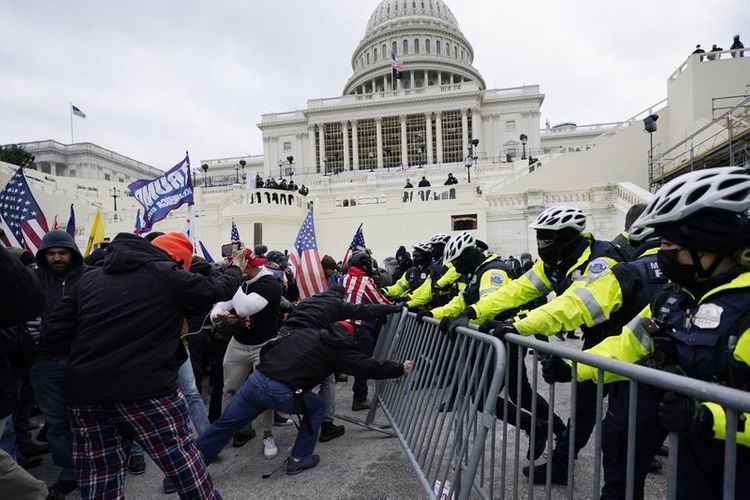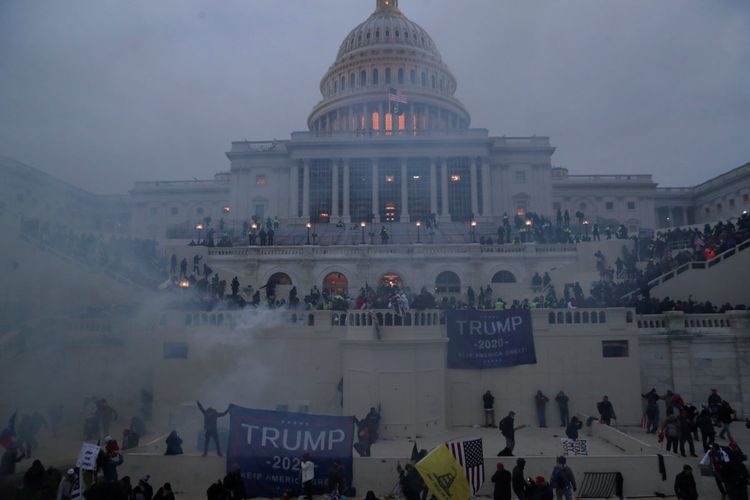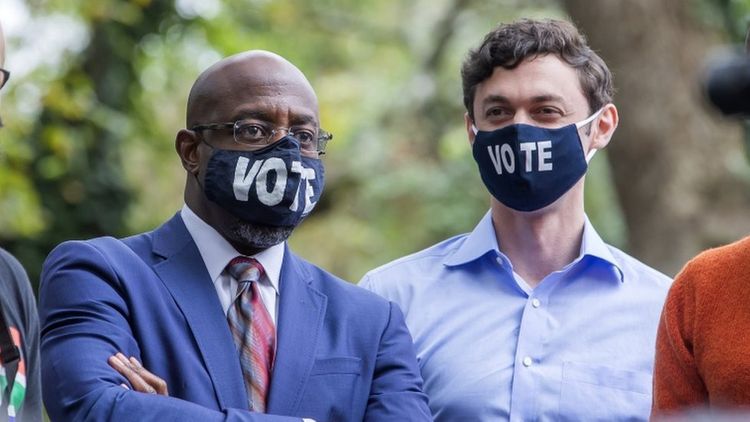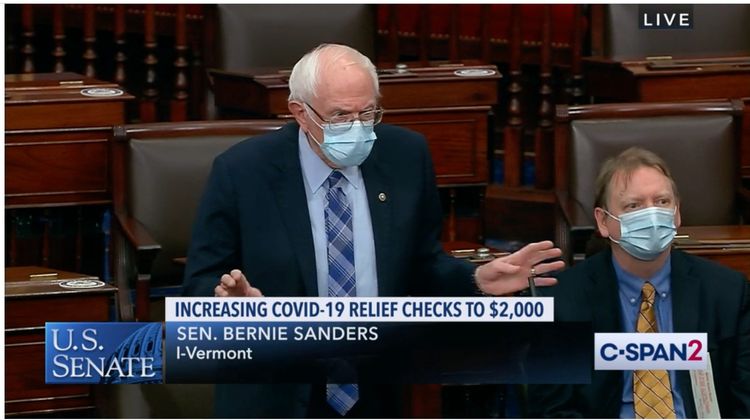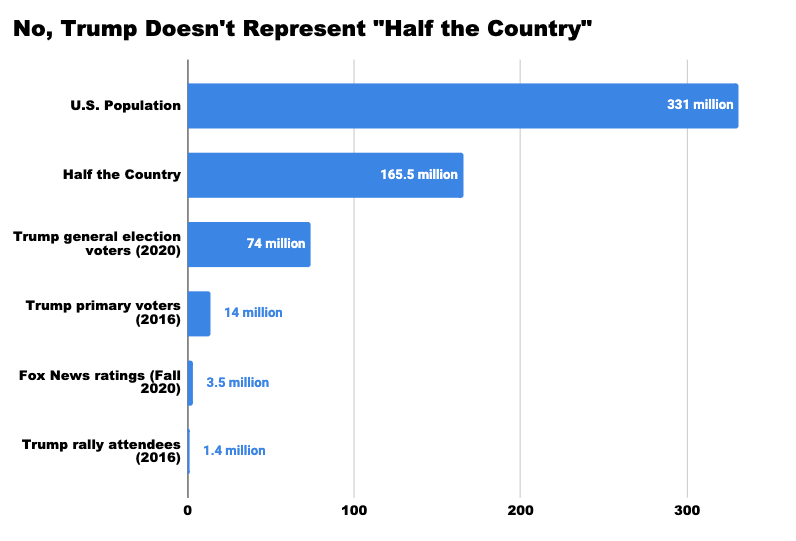What If Trump Refuses to Give Up the Presidency?
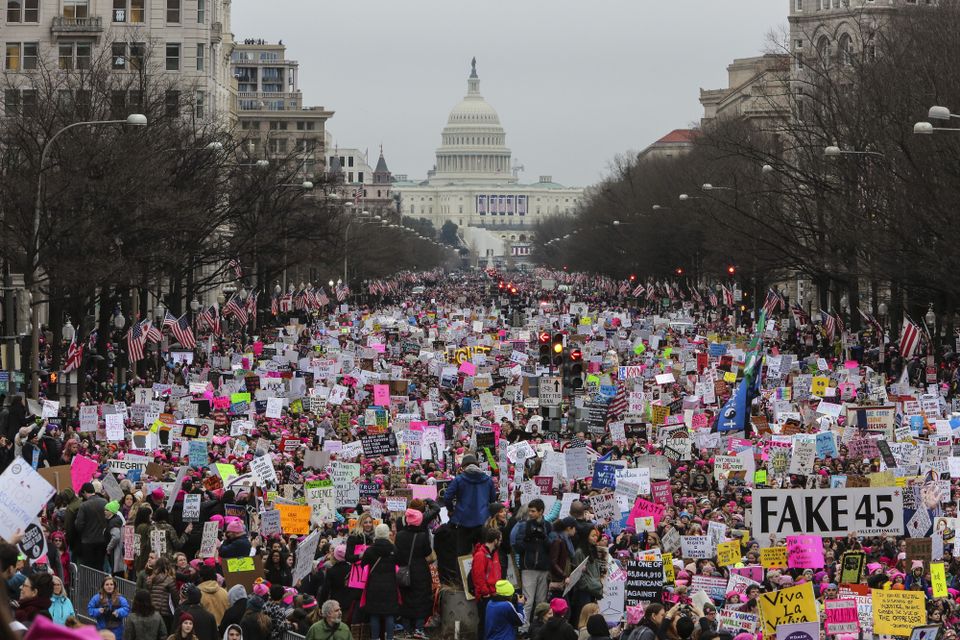
Mass protests may be the only way to force him out


Imagine this: It’s November 3, 2020. The polls just closed. Millions of Americans are glued to televisions and smartphones, eagerly awaiting the election results.
The maps start turning blue. At 1:32 a.m., NBC News calls the race. The Democratic nominee is on track to secure a 2% popular vote lead and a narrow Electoral College win by taking back Michigan, Pennsylvania, and Wisconsin. Other networks follow. But the New York Times, the Associated Press, and Fox News say the race is still too close to call.
Then, Donald Trump starts tweeting. Maybe it will look like this:
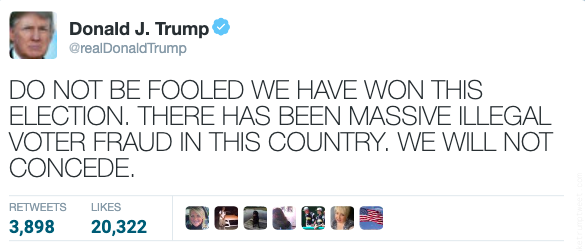
Media outlets that called the election just a few minutes earlier start debating whether or not Americans will accept the results as legitimate. And suddenly, America has its first president who refuses to concede an election.
Or, imagine the ongoing impeachment investigation continues to uncover more and more wrongdoing. The House votes to impeach Trump and the Senate holds a trial. Republican senators finally crack under the intense public scrutiny and enough of them join Democrats to convict the president and vote to remove him from office. But one question goes unanswered: Who makes him leave?
The United States is currently in uncharted territory. We’ve had plenty of bad presidents. But we’ve never had one who believes their own conspiracy theories. And we’ve never had one who works this hard to delegitimize democratic institutions.
Only with a system as stupid as the Electoral College can someone as divisive as Trump even become president. But what if a president doesn’t respect or even understand the other branches of government?
Throughout Trump’s tenure in the Oval Office — in response to the president’s many threats to undermine federal courts, attack the free press, and intimidate officials in his own administration — political scientist Brendan Nyhan has repeatedly posed the same question: “What would you say if you saw it in another country?” Nyhan’s framework is helpful when considering what would happen if Trump refused to step down after a conviction or refused to concede an election he lost.
In other countries, the only check left on a head of state is mass protests from the people themselves. Scholars estimate that peaceful protest movements must involve at least 3.5% of a country’s population to be successful.
Would Americans come together for a protest that big? If other countries are a guide, the answer is a resounding yes. In fact, recent protests aimed at ousting heads of state or winning major democratic reforms have been even larger than the 3.5% threshold.
In 2016, South Korean protests activated 2.3 million people, or 4.4% of the population, to demand the resignation of President Park Geun-hye, who was facing a major corruption scandal. She offered to resign, but other political leaders put her through a formal process of impeachment and removal from office.
The 2019 protests in Puerto Rico activated 1 million people, or 32% of the population, to demand the resignation of the island’s governor, Ricardo Rosselló, after damaging text messages he sent were publicly leaked, including messages mocking hurricane victims. The governor resigned in response to the protests.
The ongoing Hong Kong protests have activated 2 million people, which comes out to 27% of the population. Protestors initially hit the streets in response to a law that would have allowed people to be extradited to mainland China. But their demands have expanded to include democratic reforms, especially as they’ve faced repression from police. The future of their movement is still unfolding.
Back in the United States, the 2017 Women’s March activated 5.6 million people, or 1.7% of the total population. Based on my work with resistance groups, I’m confident that any mass protest challenging Trump’s threats to democracy would be even larger. In moments of crisis, Americans are increasingly stepping up, and people who would normally sit on the sidelines would be eager to join their friends and neighbors. But I think professional political types like me and grassroots activists have barely started to think about what this would really look like on the ground.
I’ve lived in Washington, D.C., for more than 15 years now. I’ve seen a lot of protests come and go. And that’s a problem. As it’s become easier to mobilize in massive numbers, the effectiveness of protests has arguably declined and organizers have had to keep escalating their tactics to get policymakers to respond.
If millions of people descend on Washington for a weekend protest and are out of town by Monday morning, does the protest really have its intended effect? With the stakes this high, I doubt it. Instead, protests would have to be distributed geographically and sustained through weekdays. That’s the point at which protests become something more — they become people’s movements that elected officials and other powerful people cannot ignore. Additionally, protests would have to involve support from unions. Labor action, including the threat of major strikes, was critical for ending the government shutdown and stopping the first Muslim ban. Solidarity with America’s labor movement would be necessary for success.
[Note: MoveOn and other progressive organizations have started organizing impeachment demonstrations all over the country.]

People like to say Trump isn’t a disease, he’s a symptom. And I tend to agree. Only with a system as stupid as the Electoral College can someone as divisive as Trump even become president. But what if a president doesn’t respect or even understand the other branches of government?
In 2000, even after Republicans physically shut down a vote recount in Florida and abused state offices to disenfranchise voters, Al Gore gracefully conceded. “Let there be no doubt, while I strongly disagree with the court’s decision, I accept it,” the Democratic nominee said. “For the sake of our unity as a people and the strength of our democracy, I offer my concession.” Or look at Richard Nixon’s attempt to be magnanimous when he resigned the presidency: “I leave with no bitterness toward those who have opposed me,” he said. “So, let us all now join together in affirming that common commitment and in helping our new president succeed for the benefit of all Americans.”
Can you imagine Trump saying anything like that? Of course not.
The scenario of Trump refusing to accept defeat may seem far-fetched to you. Or it may seem inevitable. After Trump won in 2016, I had colleagues warn me that we’d eventually face a prospect like this. I didn’t dismiss their views at the time, but I certainly discounted them. Now, as history unfolds before our eyes, I take their warnings more seriously. Regardless of how probable you think outcomes like these are, they’re certainly possible. Now’s a good time to soberly assess how we’d respond. If a Senate conviction or a clear election result can’t remove a president from office, we can. The final check on power is always the people.
